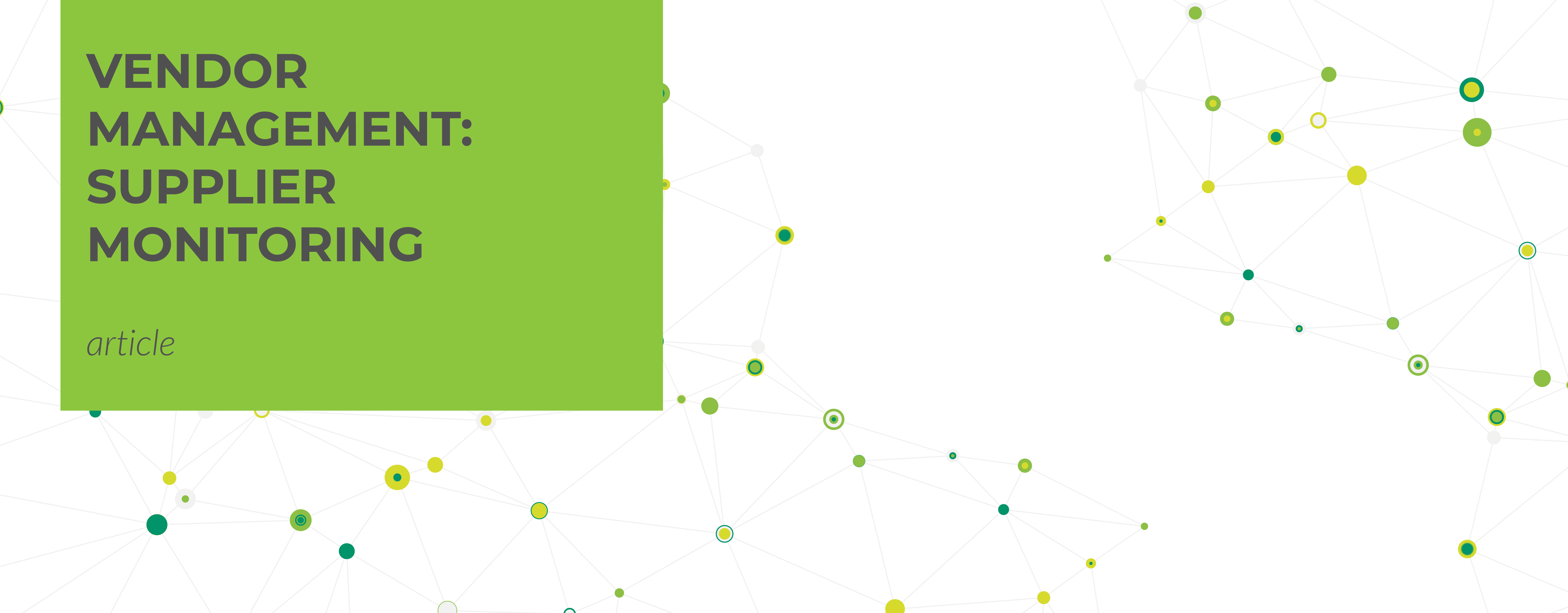About supplier monitoring
Suppliers are an integral part of a company’s production process, and it is therefore vital that their performance is excellent.
Monitoring their performance, measuring and sharing results is important for a continuous improvement process and for sharing common goals.
Why is it important to set up an effective supplier monitoring system in a company?
It often happens in a company that information on suppliers is incomplete, not centralized, and not immediately usable (perhaps because it is on different systems), or that it is difficult to compare.
This inevitably leads to knowledge being tied to individuals and not to the company, to a lack of involvement of internal customers, and to subjective decisions.
This makes it impossible to fully manage supply risk.
Vendor rating is a tool for combining strategic planning and operational control.
Its goal is to:
- translate and verify the strategic business plan on the supplier pool,
- guide decisions,
- check and monitor supplier performance
It can be used reactively or proactively.
Reactively: monitoring and promptly identifying any problems with suppliers, product classes or codes
Proactively: making suppliers aware of the key process factors for the company
Common mistakes:
- not connecting measures to the corporate strategy
- not validating causal relationships between KPIs (weights)
- aiming for the wrong targets
- misjudging the choice of metrics
To avoid the issues mentioned above, the vendor rating development phases can be identified as follows:
- defining objectives and metrics
- translating objectives for suppliers
- performance measurement
- supplier performance analysis
→ Objectives and metrics
The questions that should be asked are:
- What are the key success factors for the company?
- What are the objectives of the procurement department?
The main metrics, which are frequently mapped, are: time, cost, quality, skills and competences.
Secondly, one or more vendor rating models must be developed, if necessary with different metrics and data sources, depending on the class of goods.
Particular attention must be paid to the quality of the data source, which inevitably affects the quality of the vendor rating.
→ Targets for suppliers
What to ask oneself?
- What are the classes of goods for which I want to monitor suppliers??
- How to translate the department objectives into objectives for suppliers? How to hire them?
A differentiated approach can be adopted: based on the Kraljic matrix, one can conceive a complete vendor rating process for strategic classes, a partial process for classes with leverage, or, in the case of non-vital classes, choose not to perform the vendor rating.
For hiring, it is recommended to adopt a sharing mode.
The metrics used must vary according to the supplier’s conduct and cannot be affected by customer conduct, objectives must be shared with suppliers, and measurements must be accurate and clear to suppliers.
In addition, it is important to receive feedback from the suppliers themselves.
→ Performance measurement
You should ask yourself the following questions:
- What frequency should measurements have?
- What is the responsibility process in defining actions and interfacing with suppliers?
The frequency depends on how often the instrument is used. If the instrument is used sporadically it is useless and counterproductive to invest energy in frequent measurements.
The actors to be involved are those impacted by the performance of the supplier pool in the specific class.
→ Supplier performance analysis
- How often should one analyse the data collected?
- What visibility should one give to suppliers?
It is useful to have a dashboard enabling us to analyse and compare immediately all metrics for monitoring suppliers. The frequency may vary depending on how strategic a class of products is, without excessively impacting operations.
It is necessary to share the results with suppliers in a structured, traceable and clear way (metrics, assigned class of merit, necessary improvement actions).
A development strategy
Thanks to these tools it is possible to construct a supplier hierarchy, based on objective selection and evaluation criteria, and useful for strategic supplier management.
Suppliers can be identified as:
- Occasional, those regarding which affordability is mainly considered.
- Operational, which are able to respond to the customer’s business peaks, or in any case to provide the material in the best possible timeframe.
- Strategic, able to bring quality and knowhow to the customer
- Business partners, which can bring innovation to the customer so as to evolve together
In this way, a company adopts a strategy more focused on the supplier than on the class of goods, which is vital in order to understand whether to invest in such supplier.
So, this is a development strategy to improve performance and identify new business opportunities.
By following this methodology and applying a supplier monitoring system you will move:
- From incomplete and non-centralized information > to an informed and shared approach.
- From opinions tied to the knowledge of individuals > to objective widely available data.
Thus obtaining, in conclusion, a set of vital tools and processes for strategic management.


